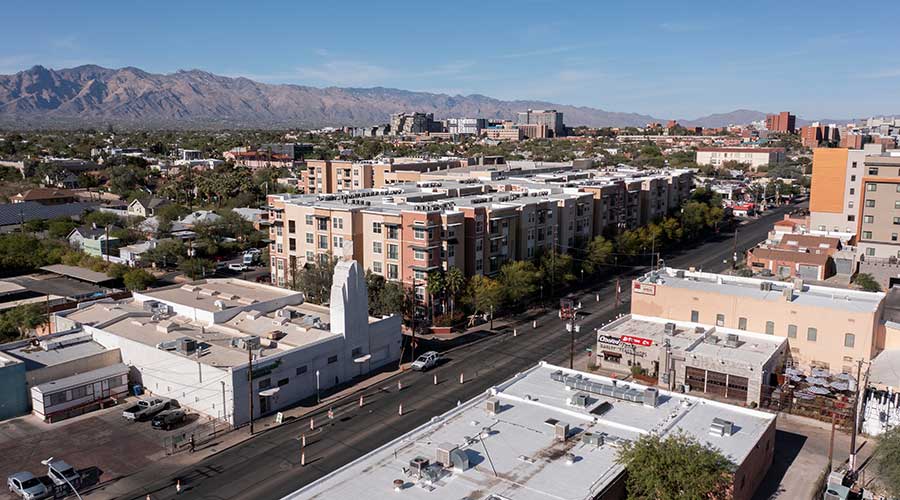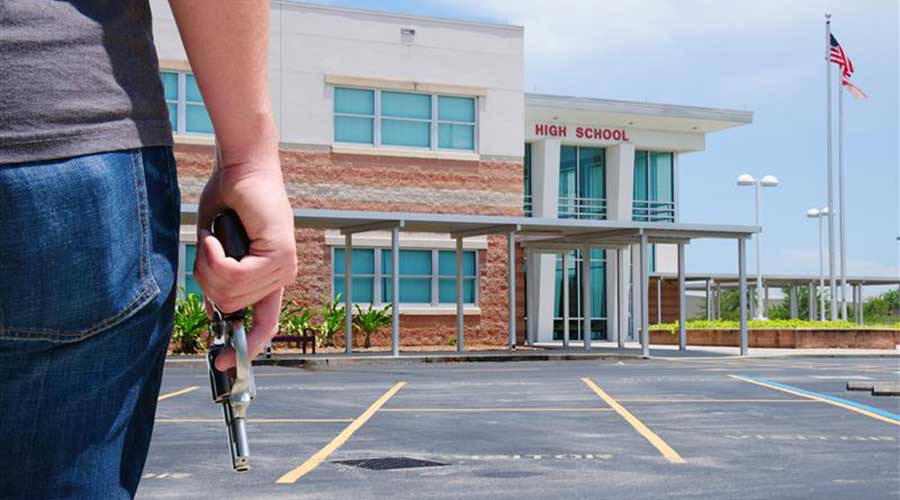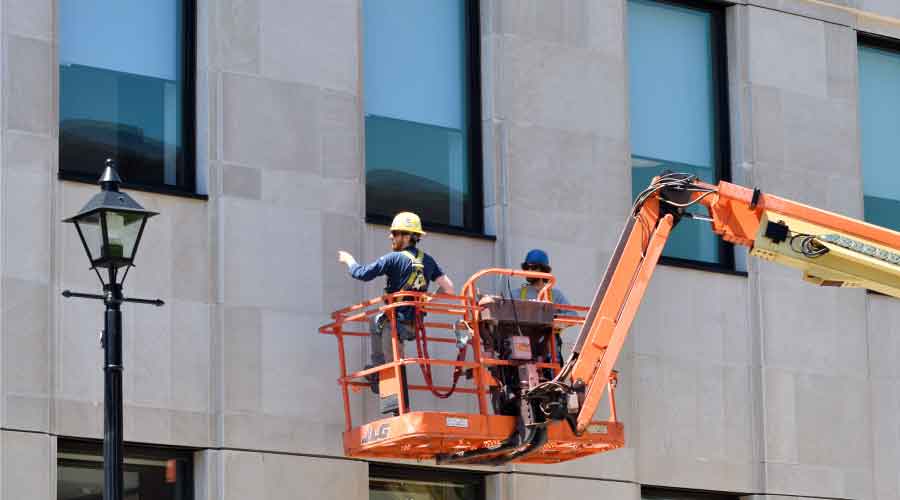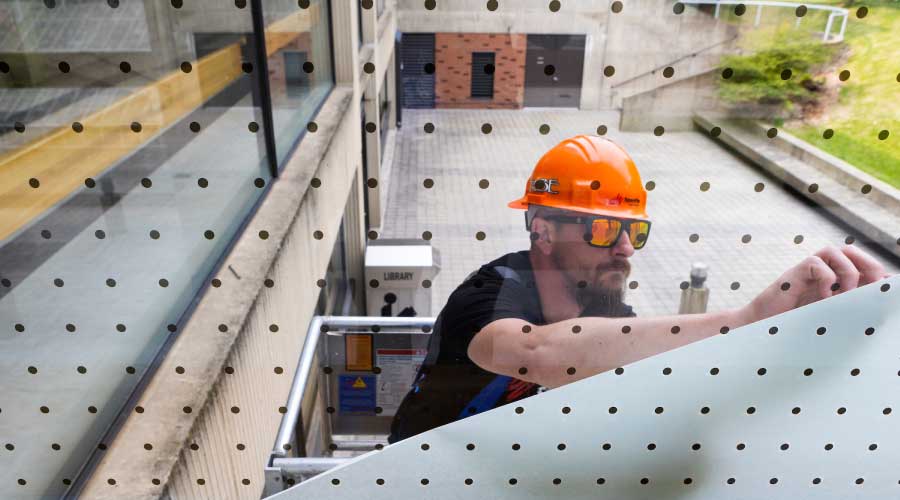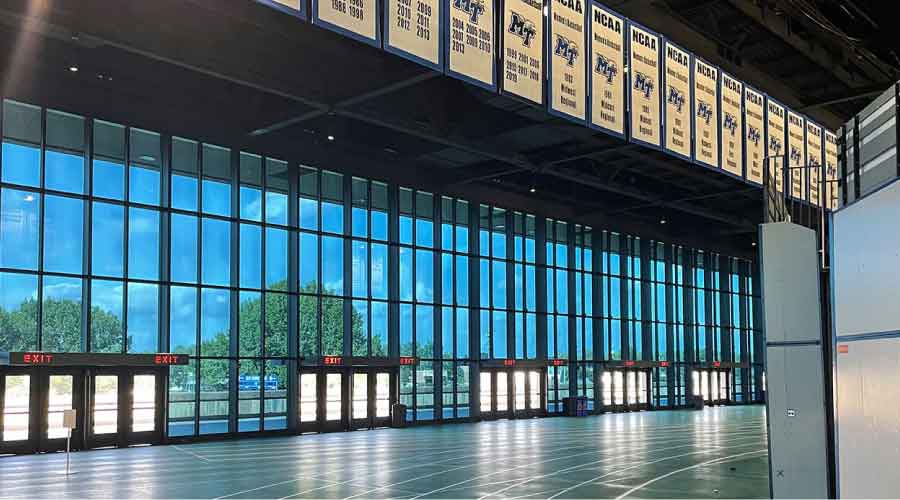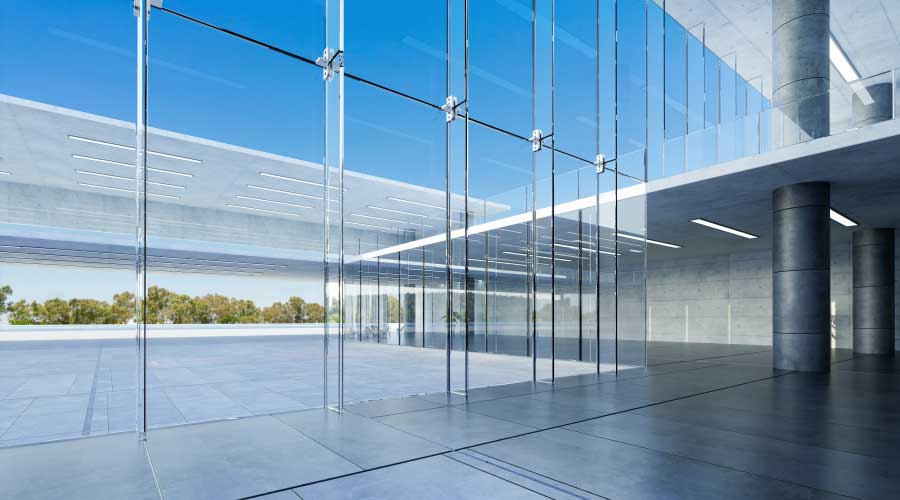How Façade Ordinances Help Protect Aging Building Infrastructure
Facade assessments are increasingly crucial for public safety. Here’s how to plan and budget effectively.
By Sarah Barber, contributing writer
Facade assessments are increasingly crucial for public safety. Here’s how to plan and budget effectively./DECK-->
Cities across the country are adopting and implementing façade ordinances in an effort to maintain public safety and ensure that aging infrastructure is properly maintained. The cities of Boston, Chicago, Cincinnati, Cleveland, Columbus, Detroit, Jersey City, Milwaukee, New York, Philadelphia, Pittsburgh, San Francisco, and St. Louis have established ordinances, which mandate periodic inspections of existing structures by licensed professional engineers or architects.
The primary purpose of the legislation is to encourage property owners and managers to be proactive about façade maintenance - to catch deleterious conditions early and prevent catastrophic failure of materials or unsafe conditions that would endanger the public. Unfortunately, in most cities, the impetus for the legislation was a tragedy or fatality, which likely could have been avoided by routine inspections and proper maintenance. For example, new legislation is being considered in the states of Florida, Hawaii, Maryland, and Virginia in response to the deadly collapse of the Champlain Towers South condominium in Miami in June 2021. As tragic instances continue to warrant further media coverage, the structural stability and safety of aging infrastructure will remain a key public issue. It is likely that more regions will adopt façade ordinances to monitor the integrity of commercial structures, particularly those in densely populated areas.
Many of the regions with existing ordinances are prone to harsh weather or environmental conditions which accelerate the deterioration of the building’s exterior and structural components. Even seemingly impervious materials such as stone and steel are no match for Mother Nature over time. The adage “out of sight, out of mind” often holds true for buildings – when you cannot easily view the exterior (up-close, as with a high rise) or the internal components (i.e. structural members), you assume they will remain in good condition for years to come. It might not occur to a property owner that the decorative terra cotta or stone ornamentation, cladding, or cornices require periodic maintenance. Unless you happen to be a professional in the building envelope industry, chances are you would not assess the condition of a façade as you pass by. Buildings typically only get attention after materials fail or when significant leaks are reported by occupants. This is why façade ordinances and their mandated inspections are so important; they help to monitor a building’s exterior conditions which would otherwise go unnoticed for years.
Beyond identifying potential problem areas, façade assessments provide key information to property owners, such as expected material lifespans and construction estimates, which can assist with capital planning for future maintenance and repair campaigns, prevent air, insect, and/or water infiltration (and associated damage), as well as help avoid the incurrence of costly fines and penalties from building departments and city code violations.
The downside to mandated façade inspections is that they can be quite costly if not planned for and budgeted. To ensure public safety, many of the regional ordinances require more than just visual observations. Many also mandate that close-up inspections be conducted along the publicly accessible elevations (i.e. those that are street-facing). To comply, an owner must retain a licensed professional to perform the inspections, as well as a contractor to provide access and operate machinery, if required. These inspections are typically conducted via scaffolding (suspended or supported), aerial lifts/boom trucks, or industrial rope access. Some municipalities are also beginning to experiment with new technology, such as drones and robotics, to perform the inspections and document the façade conditions.
In addition to the visual and physical inspections, some ordinances require a thorough evaluation of the structure’s history, including any previous repair campaigns, renovations, or major alterations. Depending on the region and municipality, the façade ordinance may also require that the engineer or architect verify that proper design details were utilized during the construction or renovation of a building. For instance, some municipalities (such as New York) require masonry probes to be conducted at periodic intervals to confirm that adequate and code-compliant wall ties and anchors are present to secure the façade to the backup structure. This is important to prevent shearing or the potential collapse of the façade onto public rights-of-way. The additional time spent reviewing design documents, past permits, and conducting probes also adds to the overall cost of the inspections.
Although not typically required, infrared thermography and roof scans may also be recommended to detect areas of water infiltration or defects within roof systems and concrete structures. A comprehensive façade assessment will provide an overview of the exterior conditions as well as any anticipated future issues, such as evidence of movement, settlement, voids, deterioration, failure, or water infiltration.
Periodic façade inspections are key tools for identifying common building envelope issues, such as sources of air, insect, or water infiltration or significant deterioration due to age and weathering (including freeze/thaw cycles, high winds, or seismic activity). The intent of many façade ordinances is to hold building owners and managers accountable for routine maintenance and public safety measures. The ordinances often mandate specific timeframes to complete emergency and/or comprehensive repairs, which are enforced by the respective building departments and officers. Failure to comply with the code requirements can result in the accrual of significant violations, fees, and penalties.
The close, physical inspections of the façades are essential for identifying signs of deterioration or underlying issues (such as cracks, movement, or displacement) that may quickly worsen or pose a threat to the public. By identifying and addressing problematic façade-related conditions before they cause significant damage to structural components or affect the occupied interior spaces, an owner may save (or even generate) a great deal of capital by maintaining their properties and investments. Performing regular façade inspections enables accurate budgeting and capital planning for repairs and helps avoid costly lawsuits, code violations, or lost revenue. Façade inspections are also important tools to help investors assess the value of a proposed acquisition or addition to their management portfolio.
Sarah Barber is ordinance compliance coordinator for Sullivan Engineering, a Rimkus Company.
Related Topics:






